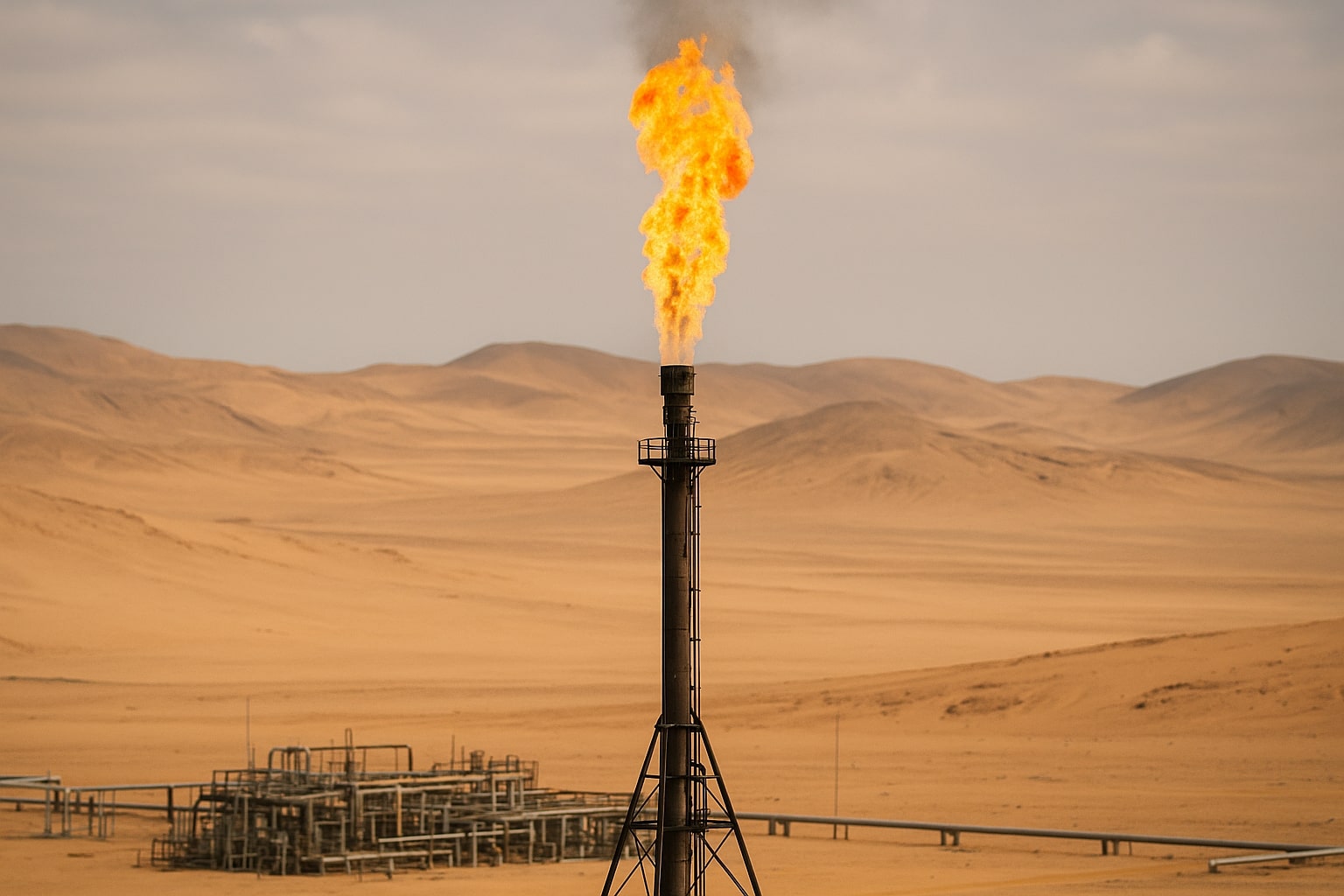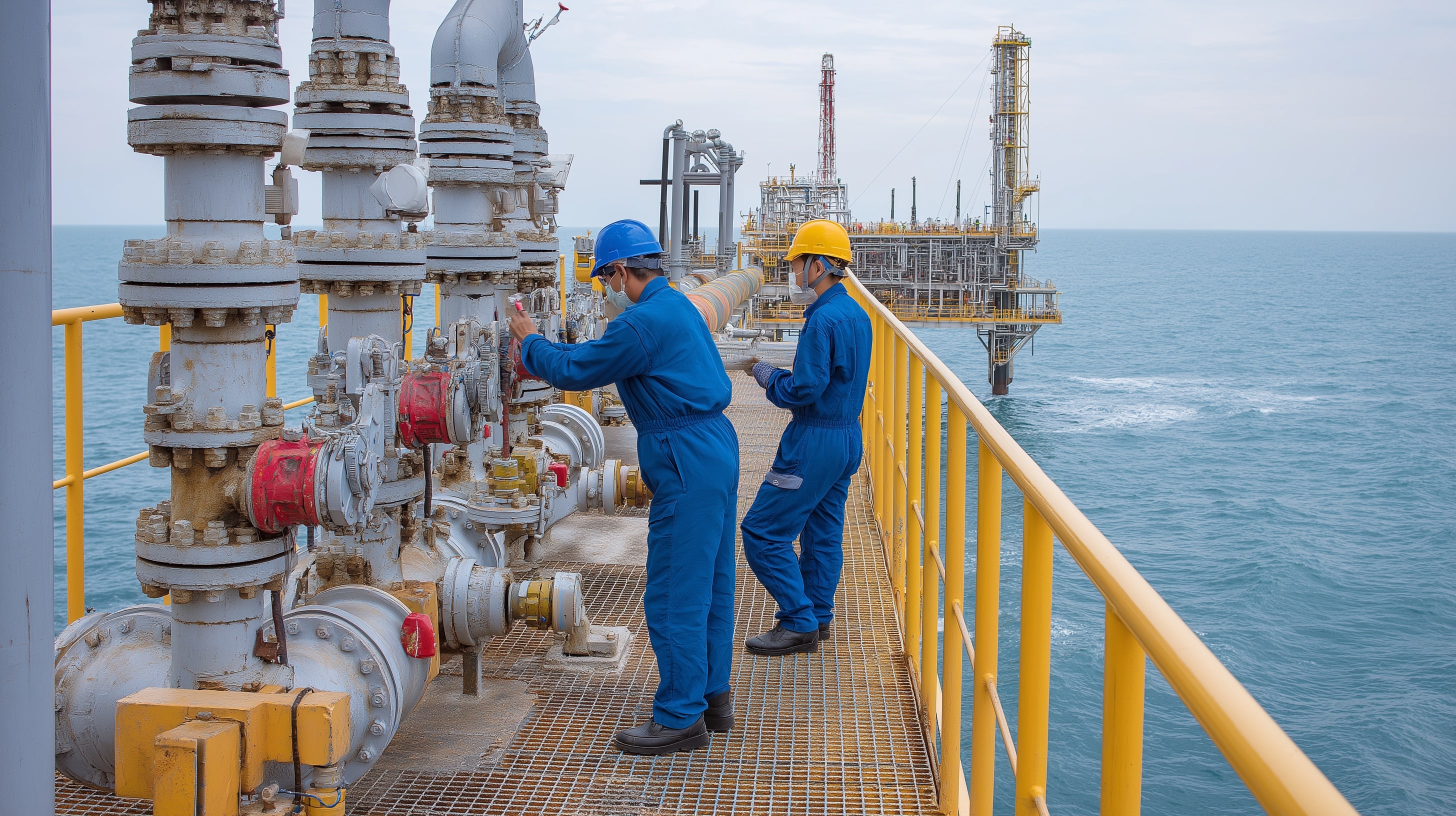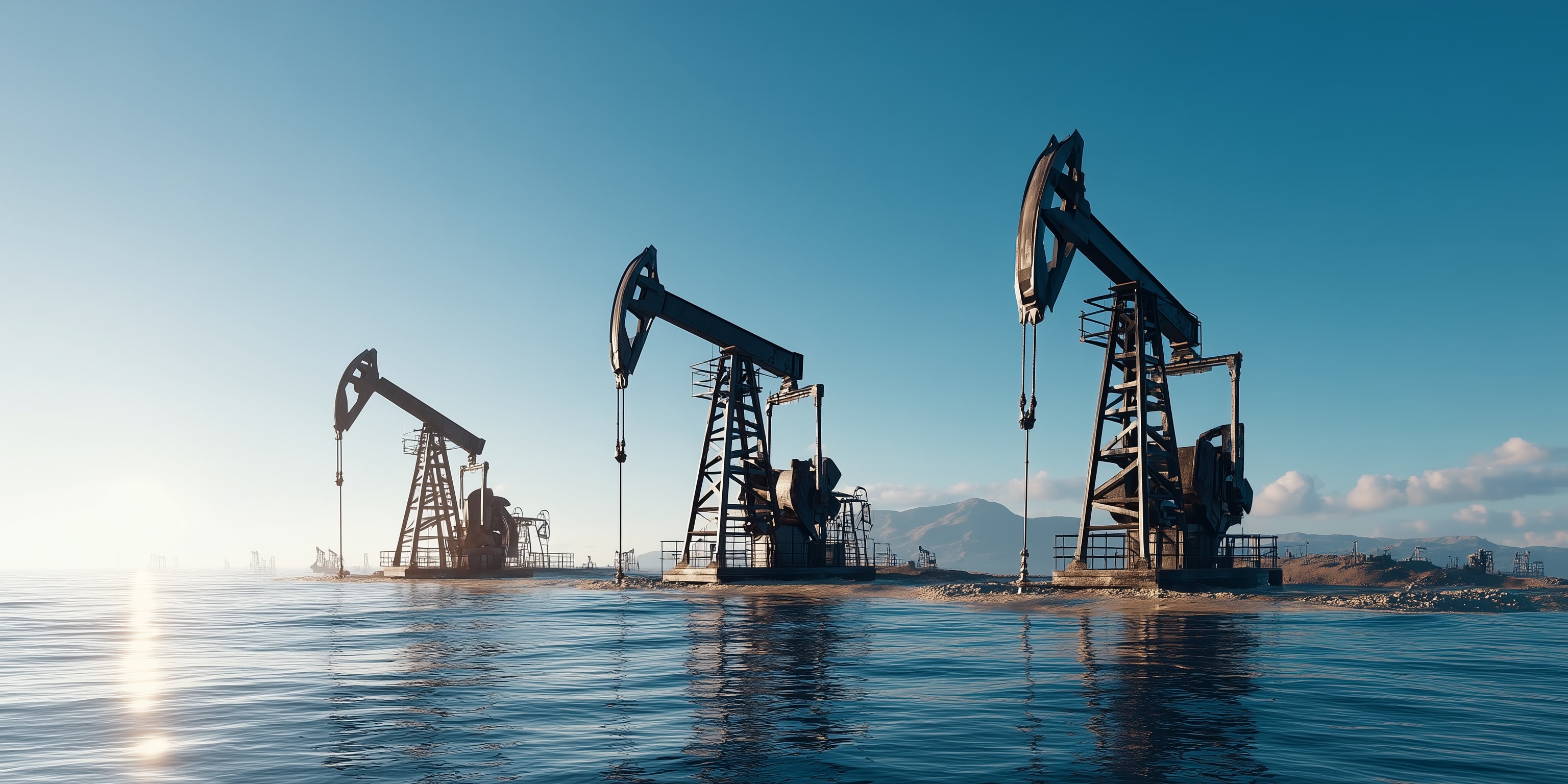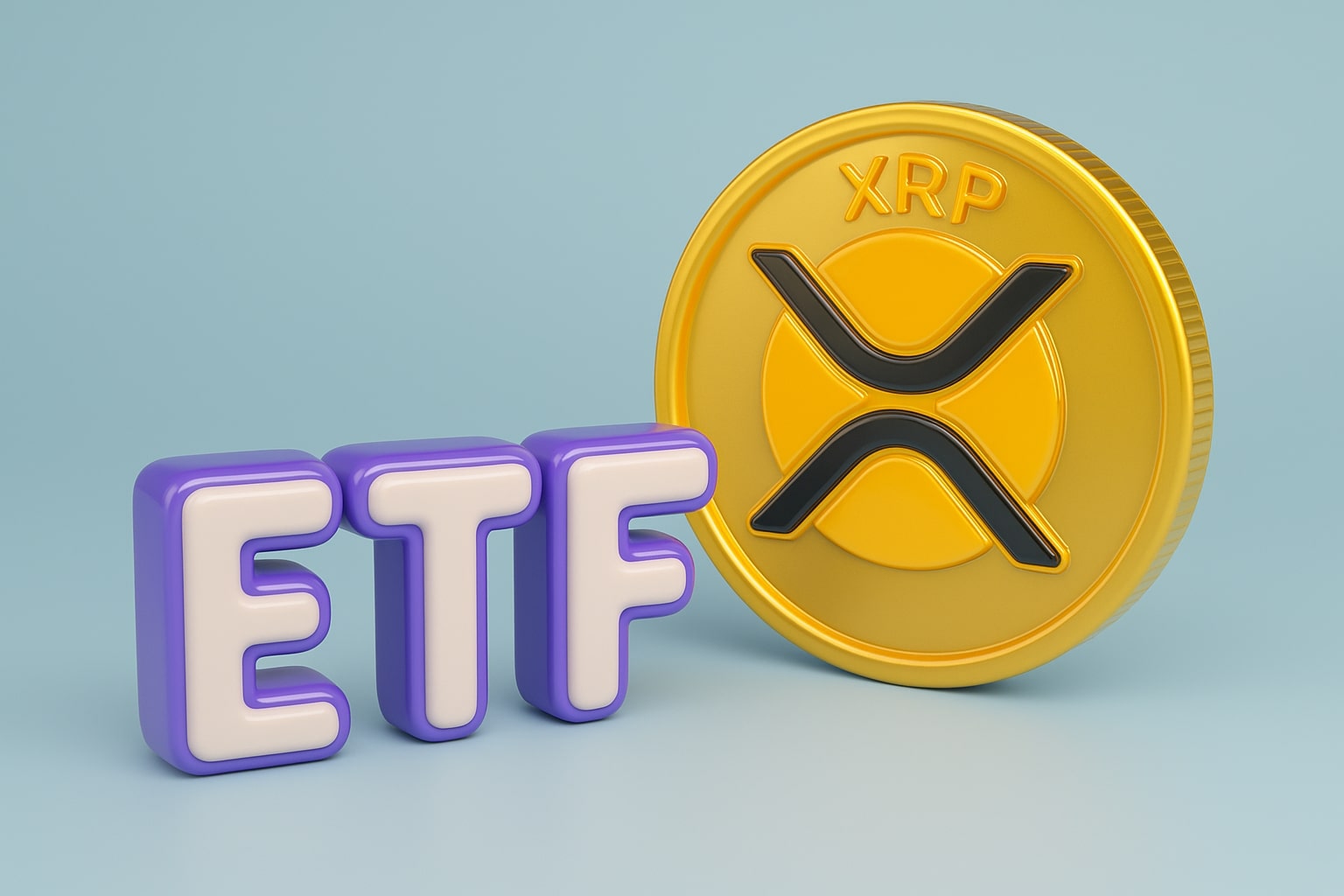
Natural Gas (NG=F) Price Cracks Under Oversupply and Cooling Demand Miss
NG=F Fails at Key Technicals as $3.00 Risk Grows | That's TradingNEWS
Natural gas (NG=F) faces mounting pressure as technical damage, supply overhang, and failed bullish triggers intensify downside risks
Natural gas prices have collapsed nearly 20% from the recent $4.11 peak, with the NG=F futures contract tumbling to $3.30 by early July. The failure to sustain above $3.96—the 200-day moving average—has reaffirmed the market’s bearish tilt. Five straight failed tests of the $3.50–$3.60 zone and a rejection at $3.740 have carved a pattern of lower highs. These repeated breakdowns have pulled the futures below the 20-day Bollinger Band low of $3.465, increasing odds of a flush toward $3.00, and possibly $2.97, the November 2024 low.
Oversupply dominates both U.S. and European markets amid sluggish demand
Inventories remain heavily stocked across the U.S. and Europe. U.S. storage injections continue to outpace five-year averages, while Europe’s LNG storage sits at 58%—well above seasonal norms. According to ANZ, LNG imports into Europe are tracking 41% above the 5-year seasonal average. These inventory builds come despite previously bullish catalysts—like the Middle East cease-fire—now neutralized, removing geopolitical premiums from pricing. Even the temporary spike in prices from the Israel-Iran de-escalation faded rapidly, with Brent falling back to $67.91 and WTI to $65.17.
In Türkiye, the Energy Market Regulatory Authority (EPDK) announced a 24.6% increase in natural gas prices for households, effective July 2. While this suggests localized demand-side pricing pressure, it’s unlikely to offset the broader global glut. BOTAS also imposed a 7.86% hike on industrial consumers. These policy moves indicate an effort to manage domestic fiscal imbalances rather than reflect market-driven scarcity.
Cooling demand fails to ignite price recovery amid scattered heat waves
Summer temperatures across the U.S. and India have been localized rather than widespread. National Weather Service data shows the intense heat dome that swept through the South in June is not expected to expand significantly into July. Cooling demand remains below average, and electricity consumption in key U.S. regions is tracking weaker than historical patterns. This lag in air conditioning usage has capped power-sector natural gas demand, undermining seasonal bull theses.
Even with triple-digit temperatures hitting some U.S. cities, the patchy nature of the heat wave has failed to drive sustained drawdowns in gas reserves. Traders remain focused on the $3.45 support zone—if breached, technicals point to $3.00 or lower as the next major floor.
Technicals collapse below key levels; trendline break amplifies downside setup
The recent slide violated several critical supports: the 200-day moving average at $3.96, the 61.8% Fibonacci retracement level at $3.35, and the primary Q2 uptrend line. NG=F posted an intraday low of $3.29 before a minor rebound. Despite forming what could be a bullish hammer candle, no follow-through rally has occurred. A close back above $3.47 is needed to suggest a technical recovery, but the broader chart pattern—a descending wedge with accelerating lower highs—implies continued weakness unless $3.84 is reclaimed.
Stochastic indicators have entered oversold territory, but momentum remains fragile. The average true range (ATR) is expanding, underscoring volatility, and price action remains tightly capped under dynamic resistance near the 200-hour EMA of $3.77. The next resistance zone stands between $3.830 and $3.950, but bulls will need to overcome the $3.96 ceiling before any sustained uptrend can resume.
Government-administered pricing caps reduce Asian gas responsiveness
India’s Petroleum Planning & Analysis Cell (PPAC) raised the administered price mechanism (APM) gas rate to $6.89/mBTU while capping ONGC and Oil India sales at $6.75. These fixed pricing regimes distort regional gas import dynamics, segmenting Asian demand and muting the usual arbitrage flows. Combined with ample global LNG supply, this adds to price pressure in spot markets where NG=F prices are increasingly disconnected from localized regulatory rate structures.
Global output expansion undermines bullish outlooks
Ongoing production growth further undermines natural gas pricing. OPEC+ approved another output hike of 411,000 bpd for August, while U.S. shale producers show no signs of restraint. LNG Canada has begun shipments, and Russian gas continues flowing through relaxed Syrian sanctions. These flows maintain high global availability despite subdued demand. Meanwhile, Colombia's Ecopetrol is expanding its Lorito field, adding LPG supply just as the U.S. begins monetizing excess gas from the Permian.
These concurrent output expansions confirm the market's oversupply regime, regardless of occasional geopolitical events or policy headlines. The bullish triggers that spurred the $4.11 peak—weather, Middle East tension, and seasonal optimism—have eroded without delivering a fundamental demand shift.
Volatility remains elevated as prompt-month contracts swing violently
August Nymex gas futures fell 28.3 cents Monday to settle at $3.456/MMBtu. The gap between prompt contracts and spot pricing (which averages $3.225) shows continued volatility and market indecision. Daily trading ranges now exceed 5%, with trend signals weakening across all major indicators. Sideways chop between $3.610 and $3.830 dominates the landscape, and without a break above $3.96, the bearish trend remains intact.
Traders should monitor $3.465 as the critical intraday pivot. A failure here unlocks rapid downside toward $3.00 and $2.97. Bullish reversal potential exists—but only if supported by a clear reclaim of 200-day trend levels and improved macro demand. Until then, NG=F remains under structural pressure.
That's TradingNEWS
Read More
-
PFFA ETF Nears $21.50 as Rate Cuts and 9.49% Yield Spark Renewed Demand
29.11.2025 · TradingNEWS ArchiveStocks
-
XRPI and XRPR ETFs Ignite Ripple’s Institutional Rally as Inflows Near $1B and XRP Holds $2.20
29.11.2025 · TradingNEWS ArchiveCrypto
-
Natural Gas Price Forecast - NG=F Blasts to $4.85 as Demand Surge Fuel Multi-Month Breakout
29.11.2025 · TradingNEWS ArchiveCommodities
-
USD/JPY Price Forecast - Yen to Dollar Slides to 156.10 as Yen Strengthens on Fed Cut Expectations
29.11.2025 · TradingNEWS ArchiveForex



















